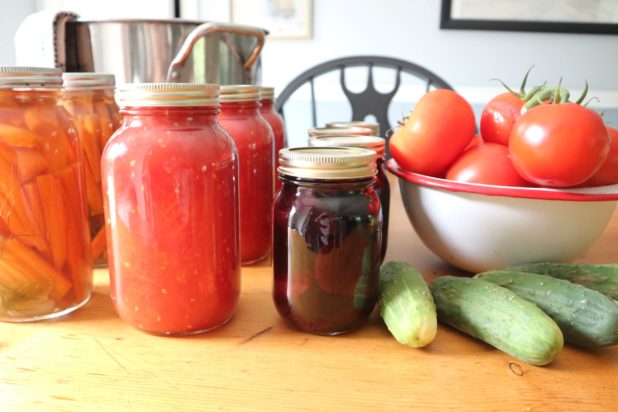General News
Canning gains new popularity
August 13, 2019

Aug. 13, 2019
By Chris Drost
When refrigeration and freezing became popular in the mid 20th century, the time old tradition of canning summer and fall produce for the long winter ahead, began to wane. While the “back to the land” movement in the sixties did bring some back to canning, it has only been recently that this method of preserving food in sterilized jars has made a significant comeback.
Humans have used a variety of methods to extend the life of fresh food since prehistoric times, techniques such as fermentation, salting, smoking, pickling and wind drying. In colder climates, freezing was also used.
Back in the early 1800s, the French government offered a cash prize to the first person to develop a process of preserving food that could be used for its army and navy. Nicholas Appert, a French chef from the Champagne region, had been working for 15 long years experimenting with different methods of food preservation. In 1809 he was awarded the prize for his canning process that sealed food in sterilized containers using heat. The first containers were champagne bottles sealed with a mixture of cheese and lime. Can is actually the short form of “canister.”
Interestingly, the first cans were around for 30 years before the can opener was invented. Before that, the containers had to be chiseled open or stabbed with a knife or soldier’s bayonet.
Sadly, Appert’s factory never really reached the financial success he anticipated and he died in 1841, a pauper.
The popular mason jar was invented and patented by John Landis Mason in 1858. Today, we see mason jars everywhere. They are the drinking container of choice at many dining establishments, decorate the tables of weddings with a bit of greenery and candles and hold a myriad of everyday things from toothbrushes to kitchen utensils. And of course, they are used to can summer and fall produce for the winter.
In Bancroft, North Hastings Community Trust’s “Harvest the North” developed a strategy for integrating community gardens and food preservation education into the community as a way to address food insecurity. Since its inception in 2015, the program has continued to grow each year with new raised beds being added in various locations. They now have a total of 30 community gardens throughout the community. “Each year it morphs as to who is looking after the beds,” says Jane Kali, program coordinator. This year it is mostly individuals and only a few organizations who are taking care of the gardens, preparing them for planting, harvesting and getting them ready for winter. A number of individuals are growing food this year to give away to the community. Youth are looking after the beds by the Riverstone Residence where storage food, such as potatoes, are being grown.
The resurgence in growing your own food, whether in a community garden bed, or at home on your own property, has increased the need for education programs to help share the knowledge about properly canning food according to current safety standards. While many continue to use the recipes of their mothers and grandmothers before them, research into the safest way to prepare canned foods continues to evolve.
Fortunately, local organizations will be offering food preservation workshops in Bancroft in the coming weeks. Loyalist College will be holding a canning workshop on apple jelly on Aug. 23, pressure canning your summer harvest on Aug. 25 and Sept. 29, herbal tinctures and honey on Sept. 22 and pressure canning your fall harvest on Oct. 20. While not yet finalized, there are plans for an herbal salve workshop in October and one at the end of November, following hunting season, for canning meat.
North Hastings Community Trust is planning an end of season celebration feast in September or October for the community gardens as well as a canning workshop. Updates on time and place will be posted on the Harvest the North Facebook page as they become available.

















